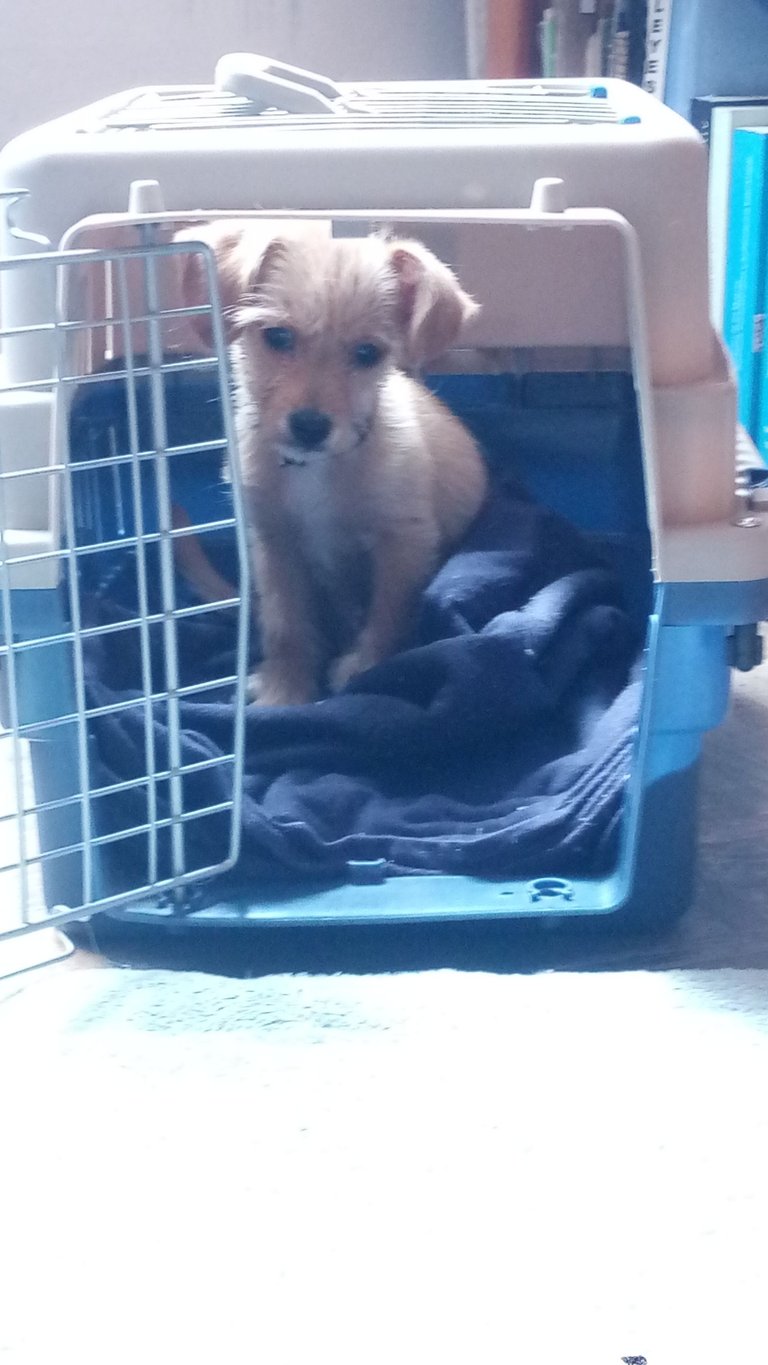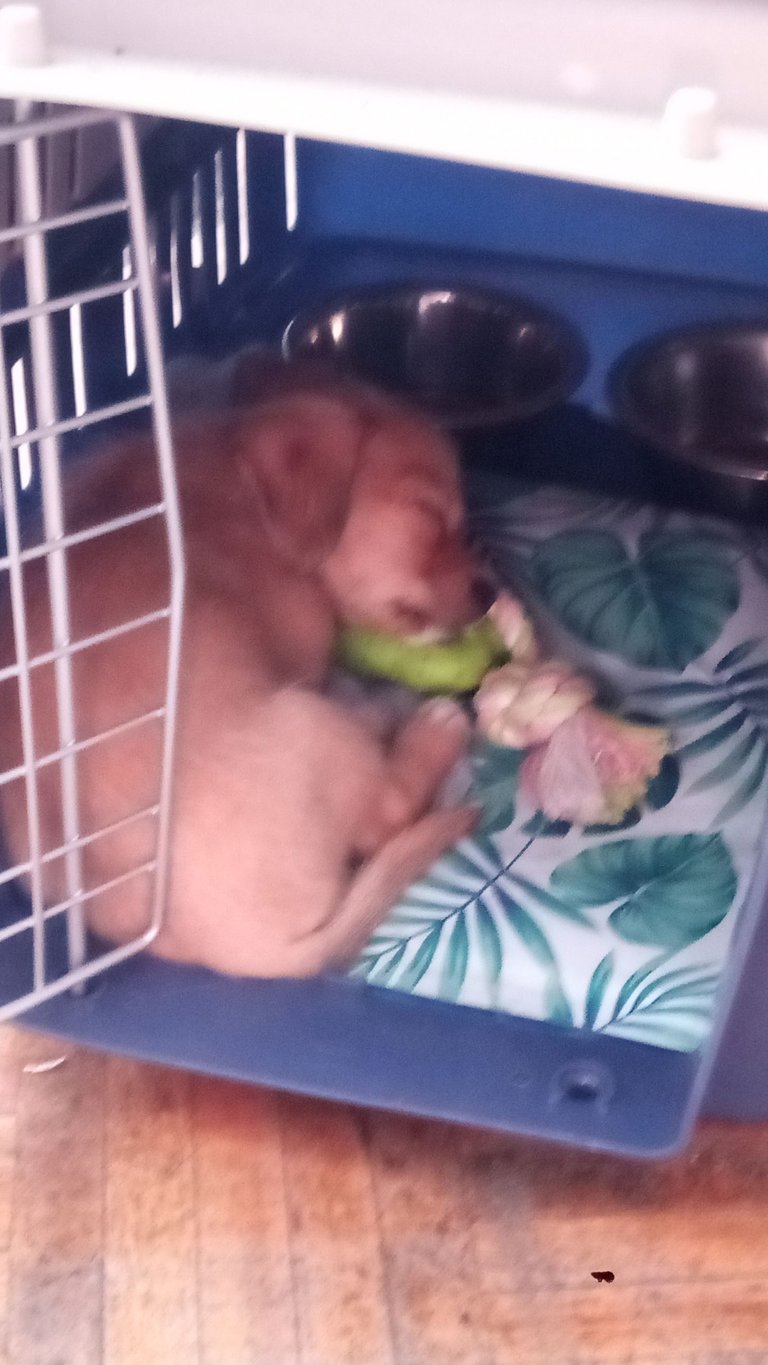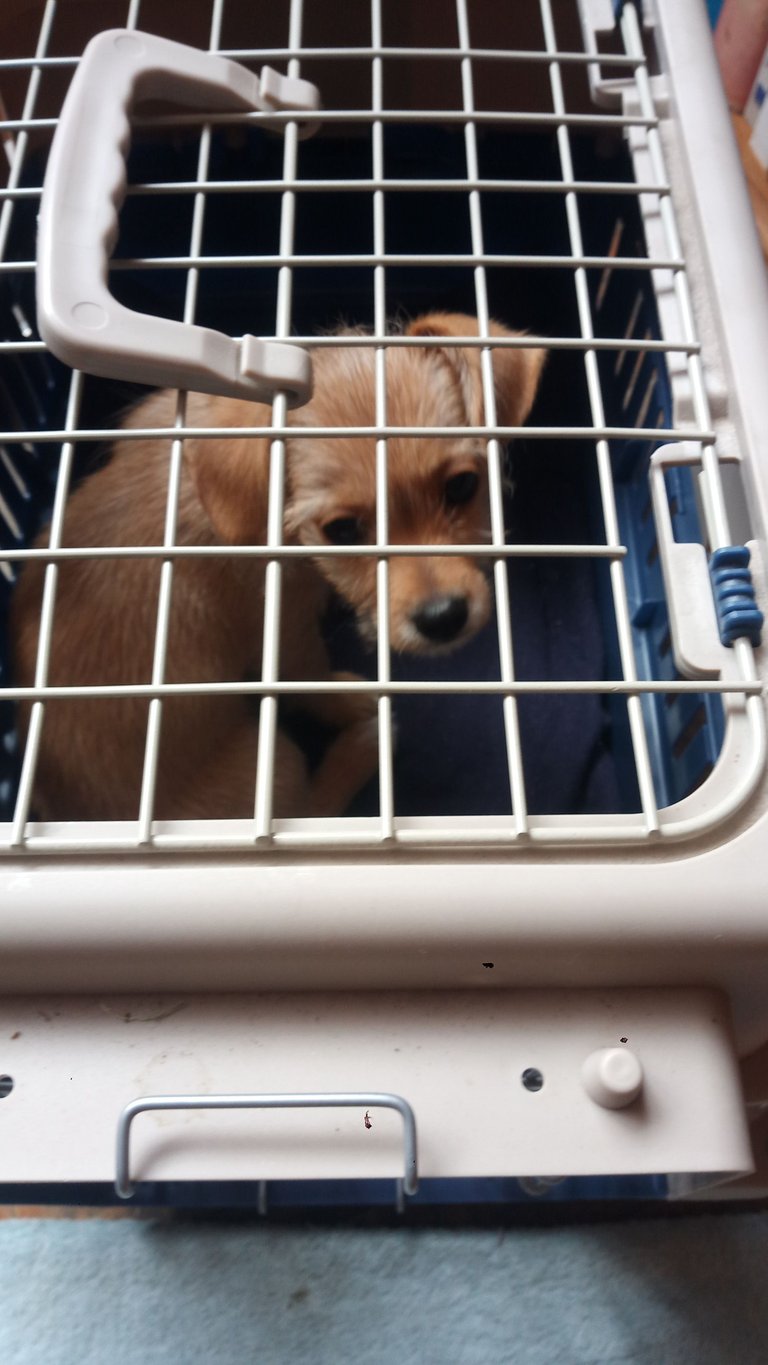With our last dog Shyka going to bed was not even an issue to consider. We'd tell her to go to her bed, and she would right away, where she'd sleep though the night. Even when we didn't tell her, for example when she had fallen asleep on the couch or the carpet, she would eventually get up in the night and move to her bed. My wife and I didn't even realize what a wonderful luxury this was.
Now that we have a puppy of less than three months, things couldn't be more different. Of course Bandido doesn't know that the night is for sleeping, and he would be more than happy to stay up till the small hours, engaging in all sorts of destructive behavior, all in the name of good fun of course. While we sleep he would wander around the house, chew up shoes and clothes, gnaw on furniture, shred books, and dig up house plants to his little heart's delight. And sure, over time he will have to learn that all this is unacceptable. But for the short term there has to be another solution.

An Overall Protective Feel
This is where a crate comes in super handy. It is basically a transport box - which we made sure to be airport approved in case we actually need to use it for travel - functioning as a puppy den. Clearly, the major objective is controlling the dog's access to the rest of our home when we are sleeping, and thus unable to supervise him. But focusing on merely this one aspect won't do any good if Bandi hates being in it. So we have to make him feel safe, cozy, and protected in his dog-cave.
It doesn't take much imagination to see how dogs are naturally drawn to small enclosed spaces, especially when seeking protection. Our Shyka would crawl under the sofa when fireworks went off, or we would just cover her with a blanket. So offering our puppy a comfy den is almost self explanatory. Not only does it give him a place to retire into a safe place, but this would be exclusively his private little area. No wonder he adapted to it so well.
Love at First Sight
Bandido loved his crate immediately, that much was clear. From the first day he sought it out when he felt tired and wanted to take a nap. During the daytime we even left the door open, letting him come and go as he pleased. At night, of course, we couldn't permit such a luxury, but he didn't seem to mind being locked in. He would signal with a brief yelp whenever he needed to go out to pee in the middle of the night, so we would let him out, and afterwards he would go back on his own (mostly). Seeing the amount of information out there on crate training and the challenges it comes with, we felt immensely lucky that our dog had accepted his crate so quickly. Still, just to be on the safe side, we keep a regular crate training practice.

Games to Raise the Crate's Appeal
There are a number of things you can do to link positive associations with the crate. The most basic one is to place the dog's food into it.
- I typically would throw one kibble at a time into the crate, and let him go in to find it.
- To add more excitement to this, you could throw in the kibble through the closed door. The dog, still outside, is going to beg you to let him enter the crate. How could I not oblige?
- The next step is to close the door when he's inside, at first only for a moment... then two... then a bit longer.
- Once the dog has gotten used to this, I could stand up and walk around the crate, maybe do something else while he can still hear and see me.
- Eventually I would move out of his field of vision, and even leave the room for a moment... then two... then a bit longer.
Still Crying?
Okay, there is one thing to be kept in mind: A puppy dog is exactly that: a dog child. In other words, he is not capable to understand what's best for him. (It sounds patronizing, I know, but then again, I am the dog's patron, so it's not out of place.) But crying is not equal to crying. A few minutes of frustrated or disappointed cries are normal, especially when playtime changes to nap time. (To ease this transition it's a good idea to let the dog engage in some relaxed licking / chewing activity before going into the crate.) But this brief crying should get less over time until it completely disappears. A more serious crying is the distressed and panicked one, which you will know when you hear it. In that case, but I'd say even if the normal pleading cry goes on for more than ten minutes, a different approach should be considered. One thing is most important, however: Do not feed the dog's need for attention! Even in the worst case, wait for that one moment between cries before you interact with your dog and open the crate, or else he'll start training you instead to respond to his pleas.

A Crate Dog Forever
Fortunately for us, most of these things have not been an issue. I just wanted to list the things I have gathered from the truly extensive information online, and thought they are important to keep in mind. Now, after more than a month of crate training, Bandito has fully adopted it, not just at night, but for his nap-times throughout the day. He may still whimper on some rare occasions, never more than a few seconds, but mostly he'll just snuggle into his blanket and go to sleep. I'm sure even when he becomes a fully responsible adult dog, who can come and go as he pleases at night, he's still going to prefer to retire to his cozy little doggy cave to sleep, or simply take some time out from this exciting world in the daytime.